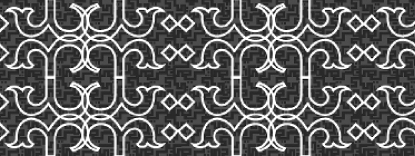PIONEERS OF DESIGN IN THE MIDDLE EAST

17.06.2009 Features
Sherry Blankenship
The purpose of this article is to bring recognition to the women from
this region who are now working in graphic design here and to begin a
broader dialogue that will help to explain, recognise and elucidate
their contributions to the profession at this point in time.
The
article investigates five women to explain their experiences, successes
and frustrations; and to illustrate the work they have done since
graduating from universities in the region and the ways in which they
are influencing the profession here.
All of this has been situated against a background of political unrest (Lebanon and Palestine in particular) and economic exuberance (the Gulf). Even within this limited geography, it is far from homogeneous in its lifestyles, cultures, belief systems, politics, economies and interpersonal practices. These countries vary dramatically from old to new, rich to poor, conservative to moderate. They meet at the crossroads of three continents with diverse histories and extremes of geography.
These are the areas with which I am most familiar, in which I have taught and worked since 1999 and from which the women in this article have lived, attended school and now work.
The women selected were known to me as students or interns either at Notre Dame University (NDU) in Lebanon which is predominantly Christian (Maronite) or at Virginia Commonwealth University in Qatar (VCUQatar) which is predominantly Muslim. VCUQatar was the first institution of higher learning in Qatar to offer design and until this year to women only. This year, they celebrate their tenth anniversary while Notre Dame University has a much longer history. It is just one of several schools in the Beirut area to offer graphic design.
I have maintained a casual correspondence with each of the women over the years since their graduations. They were excellent students and diligent workers. They are all bilingual in Arabic and English and some know even more languages. Both universities included here are English-speaking which has enabled them to work in an international environment. This is particularly necessary since designers who come here from other parts of the world communicate through English to enable the rich exchange of ideas, theories, philosophies and cultures.
The five young women were also selected because they have worked in a variety of design enterprises: advertising, private and public sectors, corporate design, graphic design and entrepreneurial design.
graduated |
university |
country |
current job |
location |
|
Martine |
2000 |
NDU |
Lebanon |
self-employed |
Dubai |
Amal |
2004 |
VCUqatar |
Qatar |
QAPCO |
Qatar |
Hiba |
2000 |
NDU |
Lebanon |
advertising |
Kuwait |
Mona |
2007 |
VCUQatar |
Qatar |
post-production |
Cairo |
Dzovig |
2001 |
NDU |
Lebanon |
Fitch |
Qatar |
Figure 1 shows that all work for others while one has established her own business. They represent a range of countries in which they were educated, from which they came and where they now work. The three from Lebanon found it necessary to leave their country due to lack of satisfactory design jobs, pay and conditions. Four of the five have found that the Gulf offered opportunities and better pay along with the potential of future growth.
They have all received four-year design degrees between 2000 and 2007. They include both Christians and Muslims. All of them have worked for a variety of clients who are of varying religious beliefs.
These women agreed to contribute their experiences, thoughts as well as examples of their work to this article. It is a small sample but one that captures the possibilities within this field in this region and on a micro level, the courage, hard work, and vision of the women who have made an impact on the profession and on the clients and audiences for whom they work.
Note: Some books and websites define the Middle East as Southwest Asia and include countries of the former Soviet Union, India, Pakistan and some, even China. Other sources include most Arabic speaking countries thus expanding the definition of the Middle East to Northern Africa. For the purpose of this article, I am focusing on the core of the Middle East which consists of the Levant and the Arabian Peninsula-those countries that border the eastern end of the Mediterranean or the Arabian Gulf.
Read more
to read the interviews and conclusion (PDF - 842KB)
The article and images have been republished with permission from the author.
Sherry Blankenship is a graphic designer, assistant professor at Virginia Commonwealth University in Qatar and a Lifetime Icograda Friend. She has written for Design Issues, Comma, Pro Design, Icograda eduNews and Designer, and has contributed to the AIGA Design Forum and Design With Type.
She has presented a multitude of papers and lectures including her work from Comma at the Tasmeem International Design Conference in Doha, Qatar. She has conducted workshops in numerous countries which allows her to combine her love of travel and design. In 2009, she will become an Associate Professor at Ohio University.
Above banner: Design by Mona Makhlouf, Wallpaper pattern using Arabic typography

relatedarticles

goodbye! and next steps for colleague and friend alexey lazarev

explorations in ethical design: meditations on equality

RCA launches new programme: MA Digital Direction

Interview | Ermolaev Bureau (Moscow)
